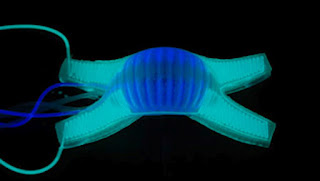Chemists, do you work weekends?
Should you?
Let me clarify: as a chemical professional, I know that I'll never work the "9-to-5" hours popular in the modern workforce. The reality ends up somewhere between forty-five and sixty hours per week. I also realize I have responsibilities to my employer that continue after I leave lab for the evening:
- Light email correspondence.
- Taking emergency phone calls.
- Reading through the literature to keep up with the "current art."
But when I say
work weekends, I mean arriving at lab on Saturday and Sunday like you would on Monday-Friday: starting new reactions, taking TLCs, ordering supplies, reading drafts, everything. The Whole Nine Yards.
 |
All work and no play make Homer
something something... |
Yes, I was a graduate student once. I distinctly remember fourteen-hour shifts as de rigueur, with at least eight more hours over the weekend to keep momentum going. I worked this pace for the incentive of a terminal degree, with the promise of a brighter future where I'd at least get major holidays off. As a postdoc, your pace often intensifies, since you have limited time and resources to make a big enough splash that you'll be considered "marketable" to someone - someone who might offer you major holidays and two weeks' vacation.
Maybe.
Well, the working world hasn't really panned out like I thought. Evening meetings occur more regularly, working lunches are standard, and now the work week bleeds into the weekend. Chores at home go unfinished. Family and friends are ignored. How's that old expression go?
"All work and no play make Jack a dull boy."
Could this actually be counterproductive? Sure:
tired workers make more mistakes, call in for more sick days, and generally don't feel as invested in company goals or culture. There's also the question of
expectation - weekend work becomes an accepted part of your schedule, and employers will anticipate your future willingness to sacrifice personal time for career goals (
Weekends? Nights? Holidays? Double shifts? Sleep under my desk? Sure!).
 |
I could tell you I was here this weekend, but...
Source: Abbi Perets |
The irony mounts Monday morning, when the inevitable question comes up - "So, how was your weekend?" The person asking actually expects you to talk about things you did outside of work!
What's the solution? Companies could hire more employees or offer performance incentives, but the weak economy has subdued these approaches. Managers could sit with their chemists to identify where investments in equipment or sourcing could lighten their loads, but this assumes the capital exists to finance such ventures. No, I'd guess that, for the foreseeable future, the "weekend warrior" will continue to wage war...from work.














